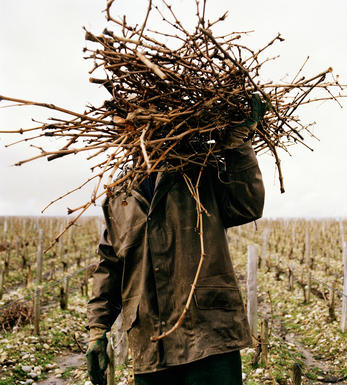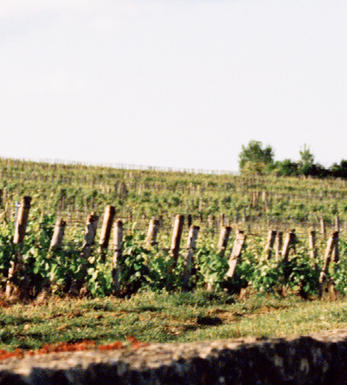
2016 Vosne-Romanée, Aux Réas, Vieille Vigne, Jean-Marie Fourrier, Burgundy

About this WINE

Domaine Fourrier
The Domaine Fourrier is a domaine in the Gevrey-Chambertin region of Burgundy. In 1994, having previously done six month internships with Henry Jayer and Domaine Drouhin, Oregon, either side of military service, Jean-Marie Fourrier took over the domaine from his father Jean-Claude who had been working since the age of fourteen, on the death of his own father in 1961. Jean-Marie had his own views on how best to run the vineyards and make the wine, and his own markets to create. He is assisted by his sister Isabelle, in the vineyards, and by his English wife Vicki.
Jean-Marie has expanded the range by vinifying and bottling apart each of the Gevrey 1er crus which is father used to blend together, and by increasing domaine bottling to 100% excepting the produce of young vines. In general though he is lucky enough to be working with very old vines, mostly planted between the two World Wars, and thus only with local genetic material and not modern clones.
Fourrier does not fit into any specific camp of vignerons. He is not biodynamic though his approach shares much with the more sensitive protagonists of that philosophy. You have to get it right in the vineyard, which means being there all the time, and understanding equilibrium. Yields are restricted through pruning, debudding and careful management of vigour – he is not a fan of green harvesting, nor for that matter of leaf-plucking in July.
In the cellar, Jean-Marie is looking to preserve the silkiness of the fruit in his wine. There is a vibrating sorting table, after which the grapes are entirely de-stemmed (he tried using stems in 1995 with unsatisfactory results, but may experiment again in his new, purpose-built cuvérie.) The vats are not cooled at the start of fermentation, Jean-Marie being happy with the natural 3 to 4 day pre-maceration before the grapes start to ferment of their own accord. The skins are punched down, manually, two to four times a day, but there is no pumping over. After fermentation Jean-Marie does cool the vats down to about 12°c, which inhibits the early onset of malolactic fermentation.
All the wines, whether village or grand cru, are matured in 20% new oak, the idea being to keep renewing the barrel cellar rather than to influence the fruit with any barrel flavours. For Jean-Marie’s ideas on steam cleaning barrels, please see page x. The wines are not racked at all until transferred to tank about two months before bottling in the spring, eighteen months after harvest.
The results of all this meticulous work are very appealing wines, each of which shows the character of its provenance quite clearly. The wines are bright in colour but not exceptionally deep, with very pure red fruit flavours on the nose. The shape of the wine thereafter depends on the vineyard. Tannins are typically fine-boned except where the cru (Clos Solon, Combe aux Moines) dictates otherwise.
Jasper Morris MW, Burgundy Wine Director and author of the award-winning Inside Burgundy comprehensive handbook.

Vosne-Romanée
The small commune of Vosne-Romanée is the Côte de Nuits’ brightest star, producing the finest and most expensive Pinot Noir wines in the world.. Its wines have an extraordinary intensity of fruit which manages to combine power and finesse more magically than in any other part of the Côte d’Or. The best examples balance extraordinary depth and richness with elegance and breeding.
Situated just north of Nuits-St Georges, Vosne-Romanée boasts eight Grand Cru vineyards, three of which include the suffix Romanée, to which the village of Vosne appended its name in 1866. The famous La Romanée vineyard was formerly known as Le Cloux but was renamed in 1651, presumably after the Roman remains found nearby. In 1760 the property was bought by Prince de Conti, and subsequently became known as Romanée-Conti.Vosne is the home of the phenomenally fine wines of Domaine de la Romanée-Conti; divine wines that are, as they say, not for everyone but for those who can afford them. The region also boasts some of the world’s most talented, quality-conscious and pioneering producers: Domaine de la Romanée-Conti of course, but also Henri Jayer, Lalou Bize-Leroy, René Engel, as well as the Grivot and Gros families, to name but a few.
Vosne-Romanée has the greatest concentration of top vineyards in the Côte d’Or, including the tiny Grand Crus of the astonishing La Romanée-Conti (a monopoly of Domaine de la Romanée-Conti producing about 600 cases a year), the classy, complex La Romanée (a monopoly of Vicomte Liger-Belair, but until 2002 bottled under Bouchard Père et Fils, producing a minuscule 300 cases or so a year) and the little-known La Grande Rue. As the name suggests, this runs up the side of the road out of Vosne. Originally a Premier Cru, it was rightly upgraded in 1992, although its rich, spicy, floral Pinots are yet to reach their real potential under Domaine Lamarche who hold it as a monopoly.
By convention the wines of neighbouring Flagey-Echézeaux are considered part of Vosne-Romanée. These include the large, very variable 30-hectare Echézeaux (divided between 84 different growers) and the more consistent, silky, intense, violet-scented Grands Echézeaux Grands Crus.
La Tâche is another monopoly of Domaine de la Romanée-Conti. It is explosively seductive with a peerless finesse, and is almost as good as their legendary eponymous wine. Richebourg is one of Burgundy’s most voluptuous wines and is capable of challenging La Tâche in some years, while Romanée-St Vivant, which takes its name from the monastery of St Vivant built around 900AD in Vergy, has a lovely silky finesse but is slightly less powerful.
If that wasn’t enough, Vosne-Romanée also boasts some absolutely magnificent Premiers Crus headed by Clos des Réas, Les Malconsorts (just south of La Tâche, and arguably of Grand Cru quality) and Les Chaumes on the Nuits-St Georges side, Cros Parantoux (made famous by Henri Jayer), Les Beaux Monts and Les Suchots on the Flagey-Echézeaux border. The old maxim that ‘there are no common wines in Vosne-Romanée’ may not be strictly true, but it is not far off.
Drinking dates vary, but as a general rule of thumb Grand Crus are best drunk from at least 10 to 25 years, while Premier Crus can be enjoyed from 8 to 20 years, and village wines from 5 to 12 years.
There are no white wines produced in Vosne-Romanée.
- 99 hectares of village Vosne-Romanée.
- 56 hectares of Premier Cru vineyards (14 in all). Foremost vineyards include Les Gaudichots, Les Malconsorts, Cros Parentoux, Les Suchots, Les Beauxmonts, En Orveaux and Les Reignots.
- 75 hectares of Grand Cru vineyards: Romanée-Conti, La Romanée, La Tache, Richebourg, Romanée St Vivant, La Grande Rue, Grands Echézeaux, Echézeaux.
- Recommended producers: Domaine de la Romanée Conti, Leroy, Cathiard, Engel, Rouget, Grivot, Liger Belair.

Pinot Noir
Pinot Noir is probably the most frustrating, and at times infuriating, wine grape in the world. However when it is successful, it can produce some of the most sublime wines known to man. This thin-skinned grape which grows in small, tight bunches performs well on well-drained, deepish limestone based subsoils as are found on Burgundy's Côte d'Or.
Pinot Noir is more susceptible than other varieties to over cropping - concentration and varietal character disappear rapidly if yields are excessive and yields as little as 25hl/ha are the norm for some climats of the Côte d`Or.
Because of the thinness of the skins, Pinot Noir wines are lighter in colour, body and tannins. However the best wines have grip, complexity and an intensity of fruit seldom found in wine from other grapes. Young Pinot Noir can smell almost sweet, redolent with freshly crushed raspberries, cherries and redcurrants. When mature, the best wines develop a sensuous, silky mouth feel with the fruit flavours deepening and gamey "sous-bois" nuances emerging.
The best examples are still found in Burgundy, although Pinot Noir`s key role in Champagne should not be forgotten. It is grown throughout the world with notable success in the Carneros and Russian River Valley districts of California, and the Martinborough and Central Otago regions of New Zealand.


Buying options
Add to wishlist
wine at a glance
Delivery and quality guarantee